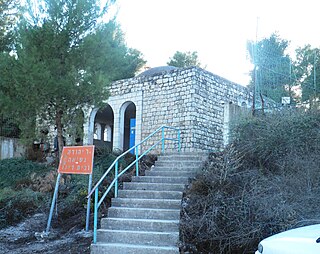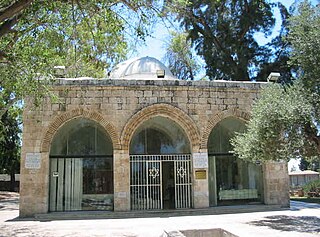Judah ha-Nasi or Judah I, known simply as Rebbi or Rabbi, was a second-century rabbi and chief redactor and editor of the Mishnah. He lived from approximately 135 to 217 CE. He was a key leader of the Jewish community in Roman-occupied Judea after the Bar Kokhba revolt.

Shimon bar Yochai or Shimon ben Yochai, also known by the acronym Rashbi, was a 2nd-century tannaitic sage in ancient Judea. He was one of the most eminent disciples of Rabbi Akiva. The Zohar, a 13th century foundational work of Kabbalah, is ascribed to him by Kabbalistic tradition.
Jacob the heretic is the name given to a 2nd-century heretic whose doings were used as examples in a few passages of the Tosefta and Talmud to illustrate laws relating to dealing with heresy (minut).

Judah II or Nesi'ah I was a Jewish sage who lived in Tiberias in the Land of Israel, in the middle of the third century CE.
Rabbi Yishmael ben Elisha Nachmani, often known as Rabbi Yishmael and sometimes given the title "Ba'al HaBaraita", was a rabbi of the 1st and 2nd centuries CE.
Bruriah is one of several women quoted as a sage in the Talmud. She was the wife of the Tanna Rabbi Meir and the daughter of Hananiah ben Teradion.
Rabbi Meir was a Jewish sage who lived in the time of the Mishnah. He was one of the Tannaim of the fourth generation (139-163). He is the third most frequently mentioned sage in the Mishnah and is mentioned over 3,000 times in the Babylonian Talmud. His wife Bruriah is one of the few women cited in the Gemara.

Rabban Gamaliel II was a rabbi from the second generation of tannaim. He was the first person to lead the Sanhedrin as nasi after the fall of the Second Temple in 70 CE.

Rabbi Tarfon or Tarphon, a Kohen, was a member of the third generation of the Mishnah sages, who lived in the period between the destruction of the Second Temple and the fall of Betar.
Simeon ben Azzai or simply Ben Azzai was a distinguished tanna of the first third of the 2nd century.
The Ten Martyrs were ten rabbis living during the era of the Mishnah who were martyred by the Roman Empire in the period after the destruction of the Second Temple. Their story is detailed in Midrash Eleh Ezkerah.
Halafta or Rabbi Halafta was a rabbi who lived in Sepphoris in the Galilee during the late 1st and early 2nd centuries CE. He was the father of Jose ben Halafta, and one of the latter's teachers of halakha. He is always cited without patronymic or cognomen.
Jose ben Halafta or Yose ben Halafta was a tanna of the fourth generation. He is the fifth-most-frequently mentioned sage in the Mishnah. Of the many Rabbi Yose's in the Talmud, Yose Ben Halafta is the one who is simply referred to as Rabbi Yose.

Eleazar ben Azariah was a 1st-century CE Jewish tanna, i.e. Mishnaic sage. He was of the second generation and a junior contemporary of Gamaliel II, Eliezer b. Hyrcanus, Joshua b. Hananiah, and Akiva.
Eleazar ben Shammua or Eleazar I was a rabbi of the 2nd century, frequently cited in rabbinic writings as simply Rabbi Eleazar (Bavli) or Rabbi Lazar רִבִּי לָֽעְזָר (Yerushalmi). He was of priestly descent and rich, and acquired great fame as a teacher of traditional law.
Eleazar ben Perata I was a tanna of the third generation, junior contemporary of Eleazar of Modi'im and of Jose the Galilean.
The House of Hillel and House of Shammai were, among Jewish scholars, two schools of thought during the period of tannaim, named after the sages Hillel and Shammai who founded them. These two schools had vigorous debates on matters of ritual practice, ethics, and theology which were critical for the shaping of the Oral Law and Judaism as it is today.
Hanina(h) ben Ahi Rabbi Joshua, or Hananiah ben Ahi Rabbi Joshua, meaning 'Haninah/Hananiah son of the brother of Rabbi Yehoshua' was a Jewish Tanna sage of the third generation. Unlike many other Tannaitic sages, he is not recognized by his father's name, but rather with his uncle's name, R. Joshua ben Hananiah. He does not appear on the Mishnah at all. Sometimes he is recorded in baraitas as merely Hananiah, which can lead to confusion with Hananiah ben Akavia.
Eleazar b. Judah of Bartota was a rabbi of the first and second centuries.
Hananiah ben Akavia was a rabbi of the second century.






